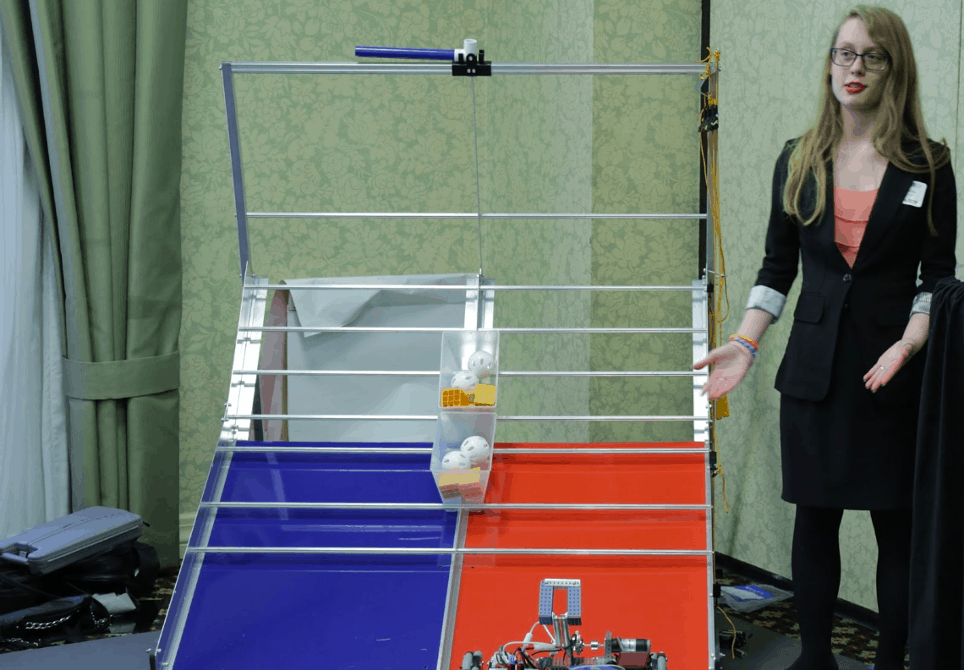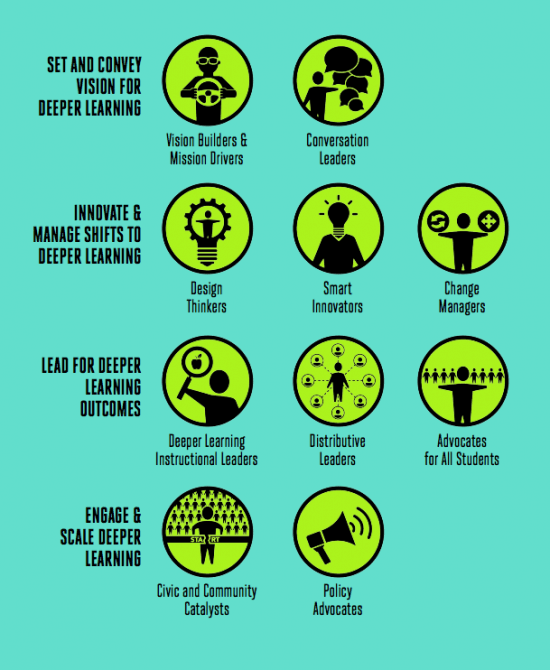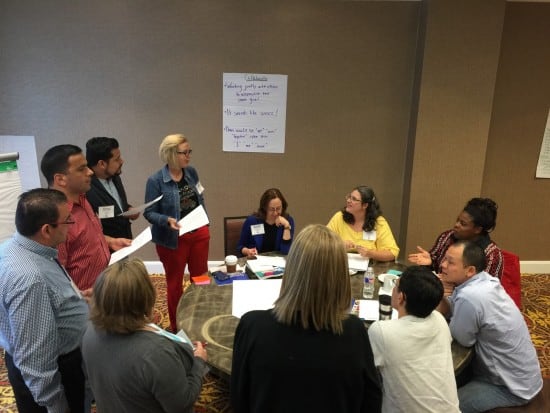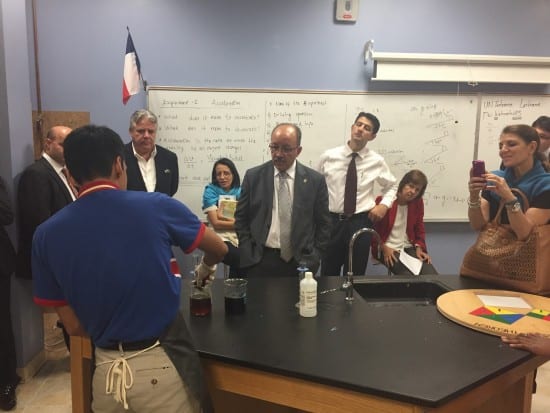Learner-Centered Leadership Means Teachers and Students Lead, Too

How do you create and sustain learning environments where more than 30,000 kids each year are engaged in deeper, project-based learning like the students in the video below?
We’ve spent the past several weeks exploring this question by getting to know Harmony Public Schools–a school network with 46 schools serving over 30,000 students using a project-based, learner-centered STEM model called STEMSOS. There are many features of the STEMSOS model that can inform and inspire teachers and leaders who are interested in shifting to student-centered, deeper learning.
Teachers told us that learner-centered teaching requires acting as a facilitator, providing on-demand support, embodying core values that support deeper learning, leveraging technology to personalize learning, committing to professional and personal growth, creating authentic learning experiences and truly encouraging students to drive their own learning.
Learner-Centered Leading
So what do leaders have to say about creating and sustaining a learner-centered education model like STEMSOS?
Just as teaching in learner-centered school requires letting go of traditional notions of what it means to teach, leading in a learner-centered school means letting go of traditional notions of what it means to lead.
In Preparing Leaders for Deeper Learning, we acknowledge that leading in project-based, blended and competency-based learning environments requires leaders to be proficient in a number of new and varied roles beyond traditional managerial and executive responsibilities.
Leaders creating and sustaining next-gen learning environments like Harmony Public Schools must excel at setting and conveying a vision; innovating and managing change; leading for deeper learning outcomes and engaging and scaling deeper learning.
Harmony leaders show evidence of these skills in many ways. Our work with Harmony revealed these two core requirements of learner-centered leadership–teacher leadership and student leadership.
Cultivating Teacher Leaders
Harmony leaders believe in cultivating leadership talent by investing in their own teachers and creating opportunities for teachers to develop leadership skills.
In this “build your own leader” model, most current administrators originally worked as teachers. The transition from teacher to leader happens much more quickly and more organically than in traditional teacher > assistant principal > principal career ladders.
There are multiple paths toward leadership for teachers including project coordinators, mentor teachers, department chairs, system course leaders, curriculum writers, PBL trainers, academic deans, etc.
One teacher described these possible paths: Teacher > Lead Teacher > Core Area Department Chair > Core Area District Coach and Teacher > Project Leader > System Course Leader > Dean of Students > Principal
Building level leaders identify unique talents and expertise of their teachers then work with district and central office level administration to leverage that expertise through opportunities such as leading professional development, working on curriculum, serving in formal leadership roles, etc. The Harmony Aspiring Leaders Academy (HALA) program supports Harmony staff as they take on leadership roles in the system. HALA is a cohort-based professional development opportunity that focuses on three strands: Principal, Dean of Students and Dean of Academics. The program consists of 4 full-day PD sessions with fully reimbursable travel expenses.
In addition to on-the-job leadership training and the opportunity to contribute to the overall success of Harmony Public Schools, teachers who assume additional leadership roles also earn a financial stipend.
Building Student Leaders

Harmony leaders don’t just create opportunities for their teachers to lead. They create opportunities for their students to lead, too!
The STEMSOS model is built on the belief that all students should graduate equipped to thrive in college and career. This means that both academics and character development are prioritized.
Spend time in a Harmony school and you’ll see lots of evidence of students developing leadership skills — from leadership camps to the more than 50,000 student projects on YouTube.
Thanks to an emphasis on project-based learning, Harmony students complete rigorous projects each year with the support of their teachers. Harmony students present their projects annually at the Texas STEM conference. Students present individually, together and sometimes with teachers.
These visits are run by student leaders who not only help give visitors a tour, but also arrange other student groups to demonstrate what deeper learning looks like at Harmony. Our next Harmony feature blog will highlight more about how Harmony engages with people outside the network to create powerful partnerships–with families, the community and business/industry–to make Learner-Centered STEM a reality.
This post is a part of a blog series in the upcoming “Getting Smart on Learner-Centered STEM” Smart Bundle produced in partnership with Harmony Public Schools (@HarmonyEDU). Join the conversation on Twitter using #STEMSOS.
For more see:
- Life Prep Should Include Problem-Based Learning, Failure & Leadership
- 4 Best Practices of Sustainable Building Leadership
- 7 Key Competencies for Whole-System Change
Stay in-the-know with all things EdTech and innovations in learning by signing up to receive the weekly Smart Update. This post includes mentions of a Getting Smart partner. For a full list of partners, affiliate organizations and all other disclosures please see our Partner page.







Anonymous
Thanks a lot for making a compensation of great learner and especially engineers for our nation. Please keep up the good work.
تقييم التطبيقات
I am regular visitor, how are you everybody?
This piece of writing posted at this web site is actually nice.